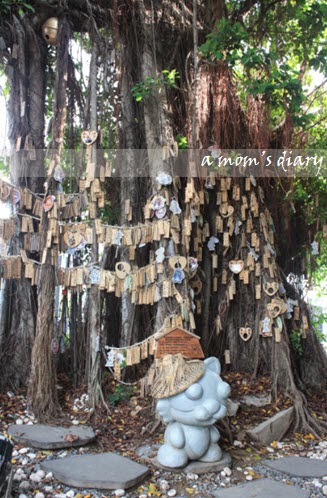We took the high speed train to Tainan, and it took less than two hours to reach Tainan. Upon arrival at the Chiayi station, we were picked up by our chartered van. Our first destination was the Taiwan Salt Museum, with a double pyramid structure. The salt industry in Taiwan dates back over 300 years to the early Chinese settlers. But with cheaper salt being imported from other countries, this is a dying industry in Taiwan.
Nicely crafted wax recreations of workers in the salt
fields in the 1960s
Model of a well salt production facility in Sichuan
Outside of the museum are examples of salt flats.
Located near the museum is the Qigu Salt Mountain (七股鹽山). The mountain is a two hectare mound of salt left over from the Taiwan Salt Corporation’s Qigu Salt Fields. The Qigu Salt Field was once the largest solar salt field in Taiwan supplying salt for the domestic agricultural and industrial sector. Through changes in time, solar salt was no longer economically viable; hence the Qigu Salt Field ceased production in May 2002, marking the end of 338 years of solar salt history in Taiwan. It is climbable, with steps carved into the hard salt to make for easy climbing.
Lunch was at Ah Cheng Seafood Restaurant, serving typical local Tainan food.
The tour ended with a feast of eat-all-you-can grilled oysters.
Our next stop was the Sio (salt in Japanese) House. Established during the Japanese occupation as an official building related to the salt industry, its Japanese-style architecture has been preserved. In its compound is a century-old banyan tree which has become a wishing tree, with lots of hanging wooden wishing tablets.
Inside the building are exhibits that tell the past history of Anping Salt industry, salt sculptures and special salts from all over the world. There are also rows of different colored salt representing 366 birth dates and a personality description associated with each one.
We then walked past the Anping Tree House (安平樹屋). It was originally an office and warehouse of Tait & Co, one of the top five trading companies in Anping area during the period of Japanese colonization. It was abandoned after the decline of the salt industry in Anping. A gigantic banyan tree has taken over the warehouse in various ways, including its aerial roots and trunks that have became part of the architecture. As it was getting late and we needed to cover the Anping Fort, we didn’t visit go in for a visit.
In the early 17th century, European seafarers came to Asia to trade and develop colonial outposts. In 1624, the Dutch occupied today's Anping and took ten years to build a fort named Fort Zeelandia. During the Japanese occupation, it was rebuilt and named Anping Fort (安平古堡). All that remains from the original structure are a few crumbling walls that used to make up the foundation.
The statue of Koxinga (鄭成功) in
front of the fort. Koxinga was a Chinese
military leader born Japan. He led the
Chinese military to defeat the forces of the Dutch East India Company (VOC) in
Taiwan.
This is part of the better preserved southern outer
fort wall. As there was no cement in the
past, the walls of the fort were laid with bricks and glued with a mortar which
was a mixture of grounded oyster shell, syrup and glutinous rice.
It was already dark when we left Anping Old Fort so we didn’t have much time to wander around Anping Old Street – just caught glimpses of narrow streets and alleyways packed with vendors, eateries, shops and stores – before heading for dinner at a restaurant named Chou’s Shrimp Roll (周氏蝦卷). Our delicious course dinner included a sampling of all the famous cuisines in Tainan.
Glimpses of Anping Old Street






























No comments:
Post a Comment